Race Report | Shimano Epic Enduro – 105 kilometers of pain
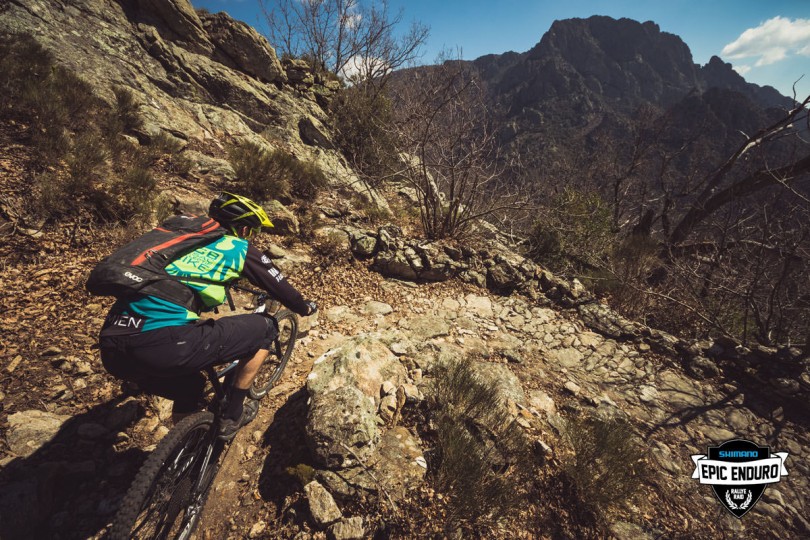
105 kilometres and 4,800 metres of climbing, 9 stages in one day – two of which to be ridden in the dark – and all of this with no shuttle. These are the stats that justify the name of the “Epic Enduro”! Testing for both the rider and the bike, this was the ideal season opener for me and my long-term test bike, and the perfect opportunity to show me how far my winter training had brought me. Suitably excited, I made my way to France, wondering whether I’d survive the day. Read on to see how I coped.
The first Impressions
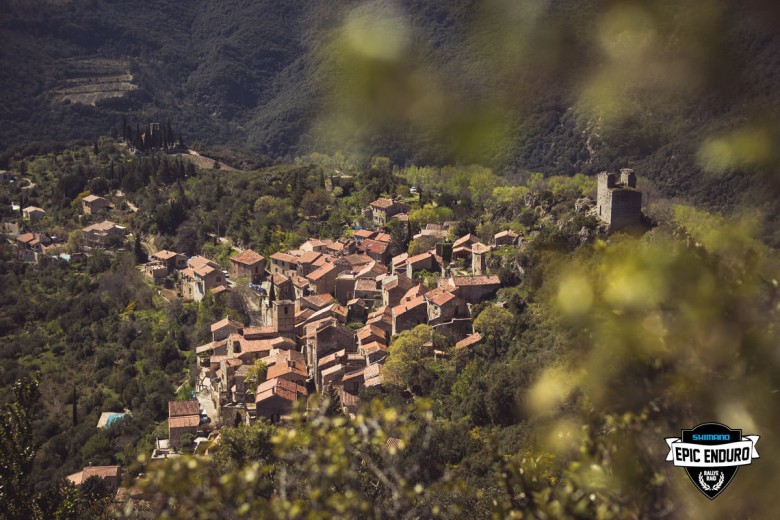
Hyped with motivation, I arrive in the sleepy, remote town of Olargues in France on Friday morning. No sign of the impending event yet, I notice, nothing that hints at the mass of 700 starters who’ll take part. I hop onto my road bike, deciding to explore the area. Before I know it, I’m soon acquainted with the altitude metres I’ll meet in the race on Sunday. Almost every tarmacked road that heads up the mountain finishes in an unrideable (and not just on the road bike) sea of loose rocks.
The first doubts
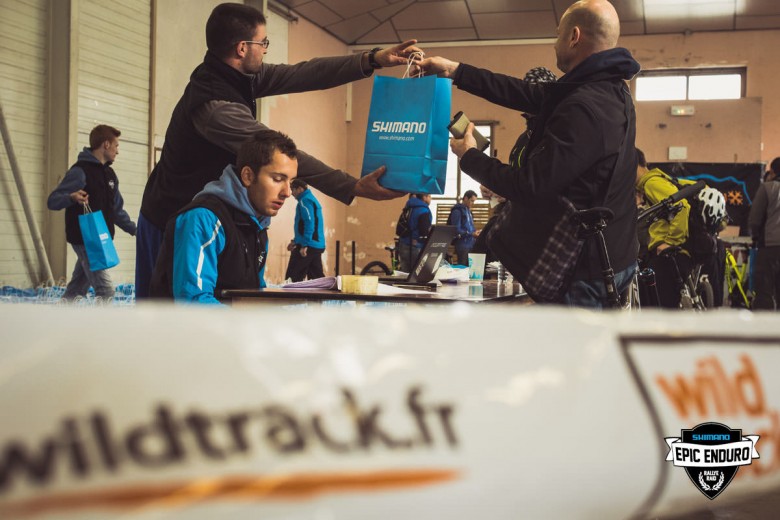
By Saturday morning the start and finish area are complete and it’s time to collect the race numbers. Once I find mine though, the doubt rears its head:
– Daniel Schlicke – Number 142 – First start group – Starting time 4:00am –
“4:00 in the morning? Why am I putting myself through this?”
However, the motivation from the 700 other competitors soon seeps into me and I make my way back to my bus-turned-temporary-camper. I’m still a little nervous, but the good mood is contagious. My plan is to cook some pasta then sort out my bike and backpack before hitting the bed as early as possible.
Race Day
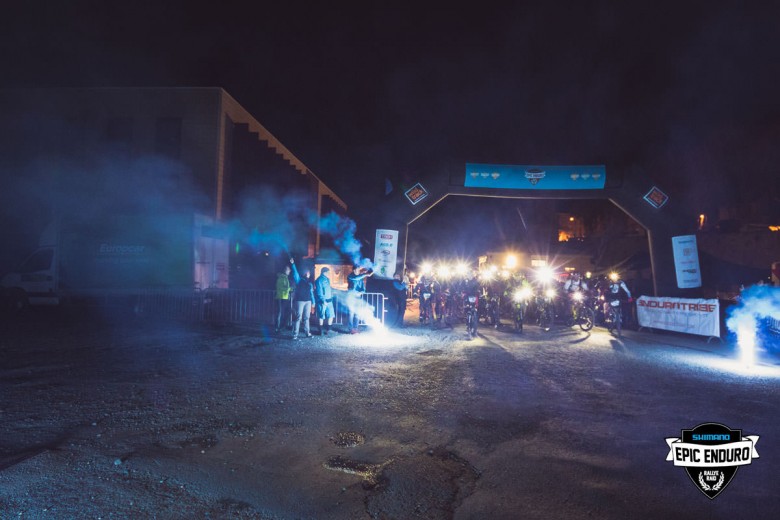
The alarm rings much earlier than I’d like. Race-day nerves abound as I prepare a small breakfast before heading to the start.
As I’d discovered at the Megavalanche, the French and Spanish riders, who make up the majority of the field, never fail to guarantee a good atmosphere, regardless of the conditions or time of day, and this certainly helps to ease some nerves.
Finally, the starting signal is given and I set off on the way to the first stage along with 350 other riders. The tempo set by the riders is anything but relaxed. No one wants to overtake during a stage, so everyone tries to put the slower riders behind them on the uphill so as not to lose time later.
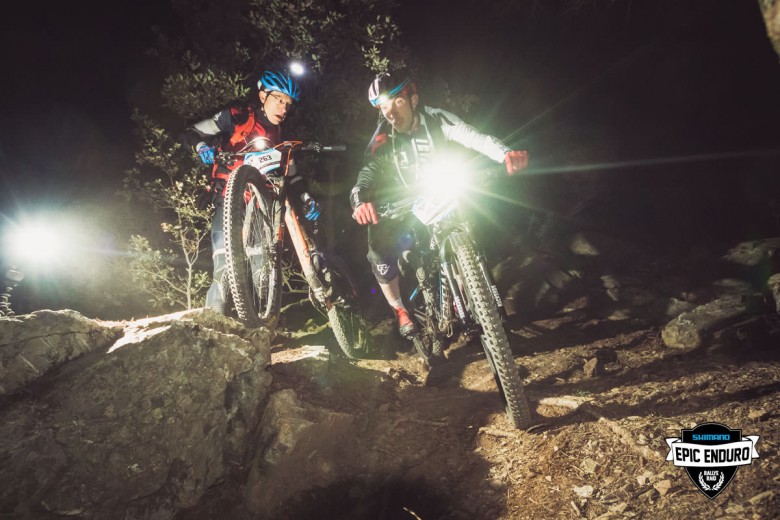
Once we reach the start of the first stage I look for the right moment to position myself behind a rider clad in as many sponsors as possible in the hope that he’ll deliver on speed. With the transponder scanned, the clock starts ticking. Fatigue gives way to adrenaline and I’m off!
After the first two corners there’s a steep rock garden – the warm-up is clearly over. With the trail lit up by my helmet light, lightning-quick decisions are necessary when it comes to line choice. Despite knowing how much climbing lies ahead, I’m already thankful for the 160mm enduro I’d chosen. A short-travel trail bike would have been far less forgiving.
The trail was fast (or at least, it felt like it in the dark) and pretty technical. The rare flow sections took us through tight trees, requiring high concentration, then – before you knew it – the steep rock sections were back. Riding behind the admittedly pretty fast pro, I was able to overtake a few riders who on his command had cleared the trail. Knowing that my English would have been less effective, I thanked him and we made our way to the second stage.
As the field had spread out by now, the uphill pace relaxed and the transition to stage two, despite its 570 vertical metres, was much more pleasant, although there were a few sections with big, loose rocks that broke your rhythm and demanded some exertion.
While on paper the first stage was the only nighttime stage, the start of stage 2 granted us just as little daylight. As I was unfamiliar with this trail, my plan was as follows: pick a pace and keep on the wheel of the rider in front; overtake the slower ones carefully, and get through without crashing. The plan was working until we hit the hairpins, which clearly weren’t to the liking of the guy ahead of me. I decided to pass him and make some distance. But I realized that my polite requests in English to overtake weren’t much use with the French riders.
As the trail got more and more technical, the armpump was noticeable (almost 15 minutes of descending!) and my taking-over technique was forced to become riskier and riskier. It was all going well until I got a rear flat from overtaking and going straight over a rock.
Fortunately I spotted a mass of helmet lights not far in the distance – surely the end of the stage I reasoned so I sprinted the final 200 metres.
Still in the dark, my next challenge was to find the hole in the tubeless, provisionally mend it and put in an inner tube. Naturally, this cost time and the first riders from the second start group were beginning to overtake me as I made my way to the third stage.
It was a relief at the top of the climb to pack the headlight into my backpack. The sun now poked up from behind the mountains, granting us breathtaking and motivation views over the surrounding area.
This was no time for pleasure though, focus was key and I tried to concentrate on the upcoming descent.
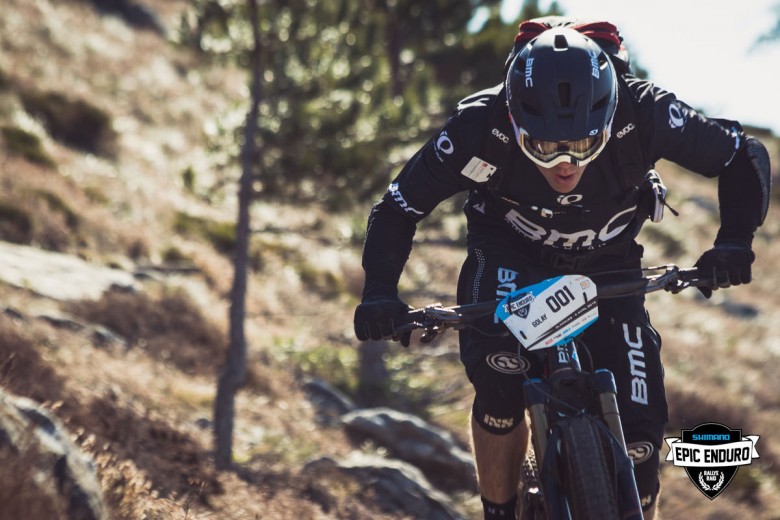
Once again, the trail was narrow, technical and rocky. But this time, it finished after just two minutes, turning into what felt like a never-ending climb. As hard as I tried, even out of the saddle I couldn’t make the climb so I relied on the adjustable seatpost. Once the climb eventually finished, the most flowing and fun trail of the whole event awaited us. As quick as lightning, you were manoeuvring along burms between trees, and the flecks of blood on some riders’ gloves (including mine) testified to just how tight this trail was. But even this didn’t detract from the euphoria – after all, the end of the third stage meant that the first third of the race was now behind us and you were guaranteed the title of ‘EPIC DE BRONZE GARANTI.’
If you were satisfied with that title, you could end there. By then you’d already done 32 kilometres and around 1,550 metres of climbing.
For everyone else, refreshment stop, then on to stage 4.
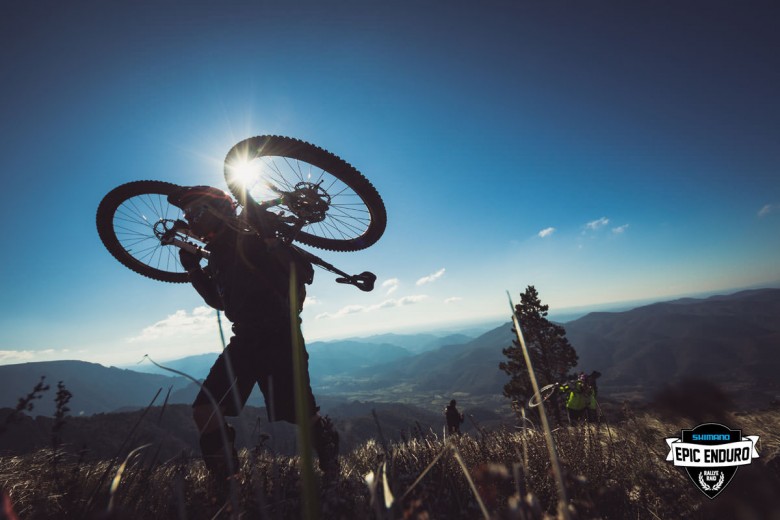
Taking in 873 mostly-unrideable vertical metres, this transition was reputedly the hardest of the race and the strong headwind didn’t help either. Signs that read ‘To Stage 4 & 5’ made it clear to us that we’d be taking on this climb twice. Most riders shouldered their bikes, lugging it to the summit. I decided to push mine as I reasoned it would save energy – but it did lose me valuable time.

To sum up the fourth stage, the correct word would be ‘long’. Covered in rocks, this mountain hiking trail turned into a trail more akin to a washed-out riverbed that was strewn with round stones. With 17 minutes of descending, the countless hits and bumps caused masses of pain in your arms and wrists. As I felt my energy ebb away, I gripped the handlebars tightly and hoped to reach the finish without crashing.
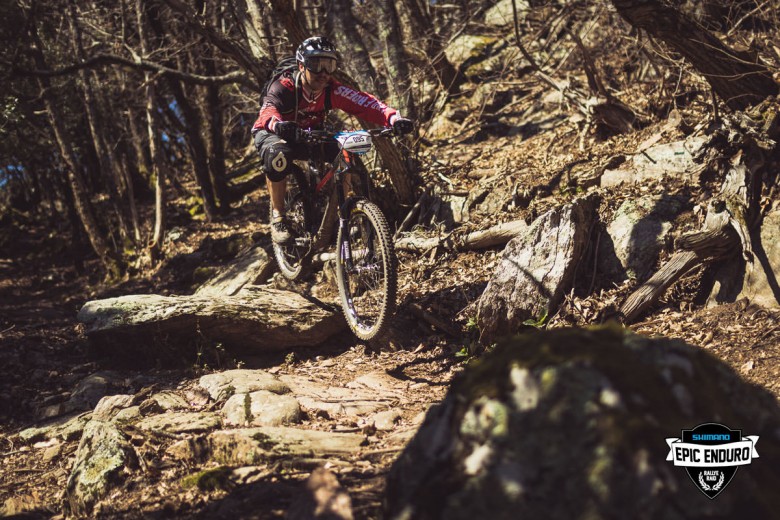
After completing the climb to stage 5 – which took me a full 2 hours and 19 minutes by the way – I was under no illusions as to the level of my exhaustion.
Just like the fourth stage, we set off along a mountain-hiking trail. Reasoning that at the slow speed I was going that I could jump over a 2-metre gap instead of riding through it, the stage was pretty much over for me after just a minute of riding.
Due to my distinct lack of power, I slammed with my full body weight onto the rocky edge with my rear tyre and said hello to the next puncture. After realizing that I was at around 1,000 metres above sea level still, I knew I’d have to change the tube there and then, which wouldn’t half mess with my result.
Fortunately, changing it went well and I set about trying to make up for lost time. But that was another decision I was about to pay for: in just a matter of minutes, I heard another hissing puncture. The stage, with two punctures, took me an unbelievable 1:08:21.
Disappointed by myself, I headed to the sixth stage on the much more pleasant and much less hilly dirt track.
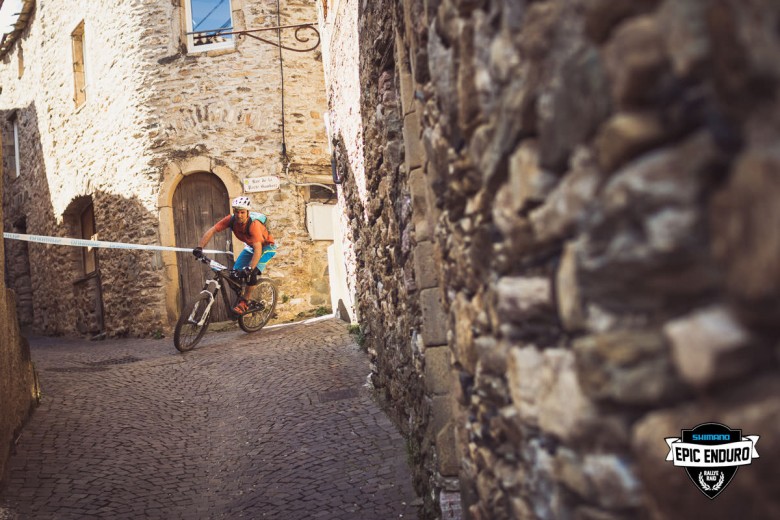
The stage too was nothing like the previous ones. After just two minutes through the old town of Olargues, there were steps and slippery tarmacked corners to conquer before a wooden ramp led you through the crowds of spectators and into the finish.
A broken gear cable meant my race ended here. As I’d lost too much time, too often, there now wasn’t enough time remaining to first change it, then complete the last three stages.
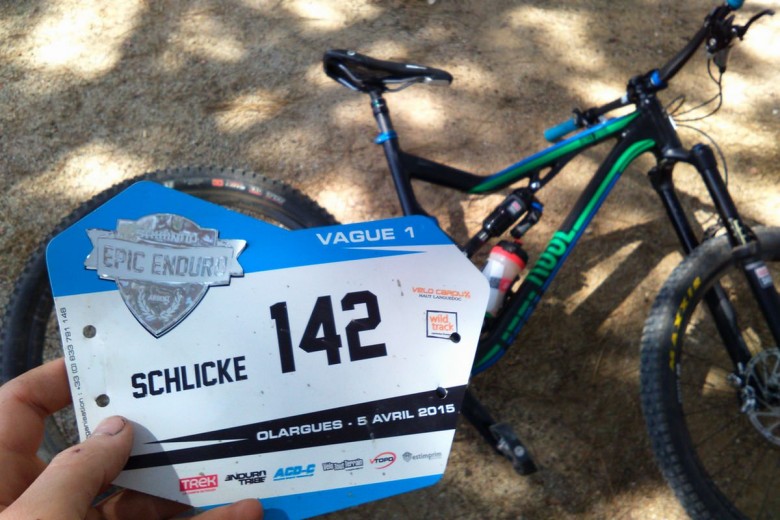
While the rest of the field continued onto stage 7 and the title of “EPIC D’OR’, I had to satisfy myself with a silver sticker and some pretty disappointing stage times. I finished in 379th position in the overall classification, but my times on the first three stages placed me within the top 50.
I still managed 73 kilometres and 2,900 metres of climbing, leaving France with a mass of experiences.
So, back to the question I asked at the beginning: why put yourself through this? Why wake up at 4am? Why cart your bike for two hours up a 1,000 metre climb?
Because these are the challenges that motivate me. Regardless of result, they motivate me to ride, to progress, and to better myself. And every single time I can look back on the fun I’ve had, and show myself what I’ve achieved. So get out on that bike, go for it. Find what motivates you.
Words: Daniel Schlicke | Pictures: Antoine Bussier
Did you enjoy this article? If so, we would be stoked if you decide to support us with a monthly contribution. By becoming a supporter of ENDURO, you will help secure a sustainable future for high-quality mountain bike journalism. Click here to learn more.








